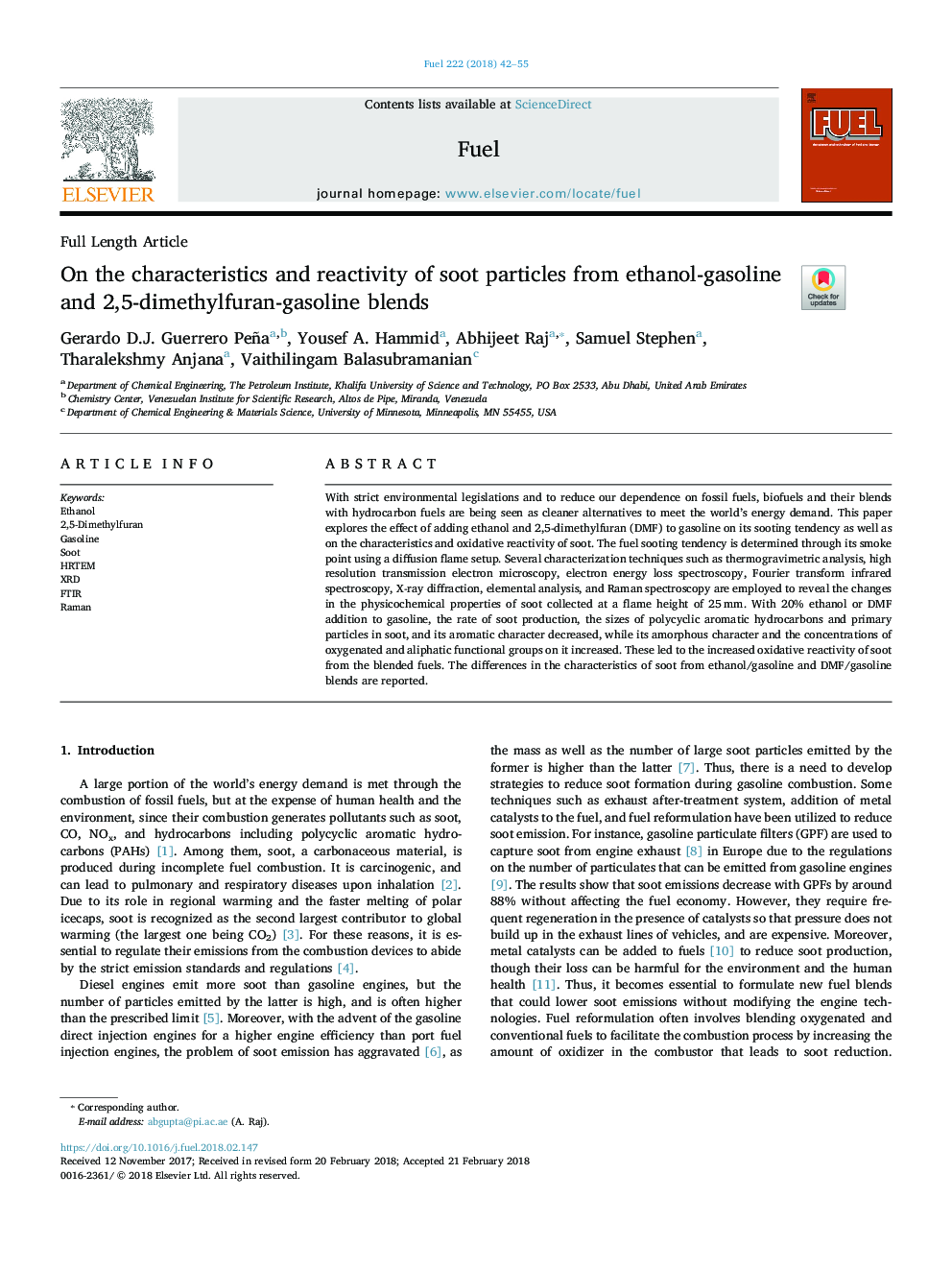| Article ID | Journal | Published Year | Pages | File Type |
|---|---|---|---|---|
| 6631329 | Fuel | 2018 | 14 Pages |
Abstract
With strict environmental legislations and to reduce our dependence on fossil fuels, biofuels and their blends with hydrocarbon fuels are being seen as cleaner alternatives to meet the world's energy demand. This paper explores the effect of adding ethanol and 2,5-dimethylfuran (DMF) to gasoline on its sooting tendency as well as on the characteristics and oxidative reactivity of soot. The fuel sooting tendency is determined through its smoke point using a diffusion flame setup. Several characterization techniques such as thermogravimetric analysis, high resolution transmission electron microscopy, electron energy loss spectroscopy, Fourier transform infrared spectroscopy, X-ray diffraction, elemental analysis, and Raman spectroscopy are employed to reveal the changes in the physicochemical properties of soot collected at a flame height of 25â¯mm. With 20% ethanol or DMF addition to gasoline, the rate of soot production, the sizes of polycyclic aromatic hydrocarbons and primary particles in soot, and its aromatic character decreased, while its amorphous character and the concentrations of oxygenated and aliphatic functional groups on it increased. These led to the increased oxidative reactivity of soot from the blended fuels. The differences in the characteristics of soot from ethanol/gasoline and DMF/gasoline blends are reported.
Related Topics
Physical Sciences and Engineering
Chemical Engineering
Chemical Engineering (General)
Authors
Gerardo D.J. Guerrero Peña, Yousef A. Hammid, Abhijeet Raj, Samuel Stephen, Tharalekshmy Anjana, Vaithilingam Balasubramanian,
